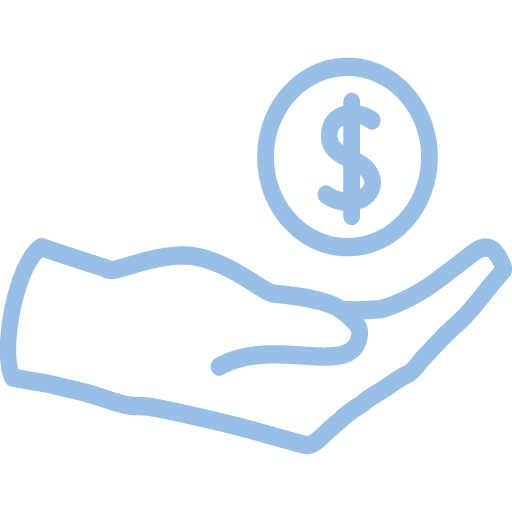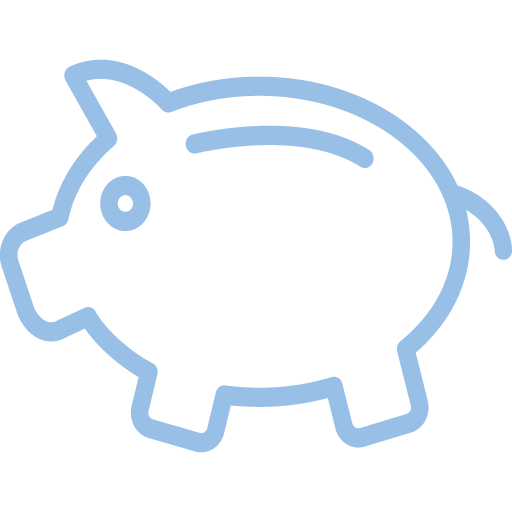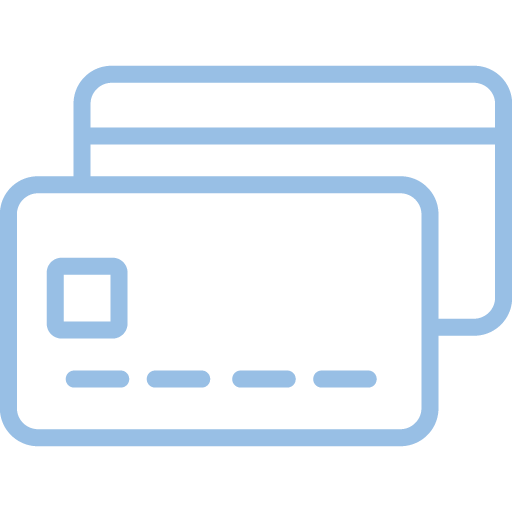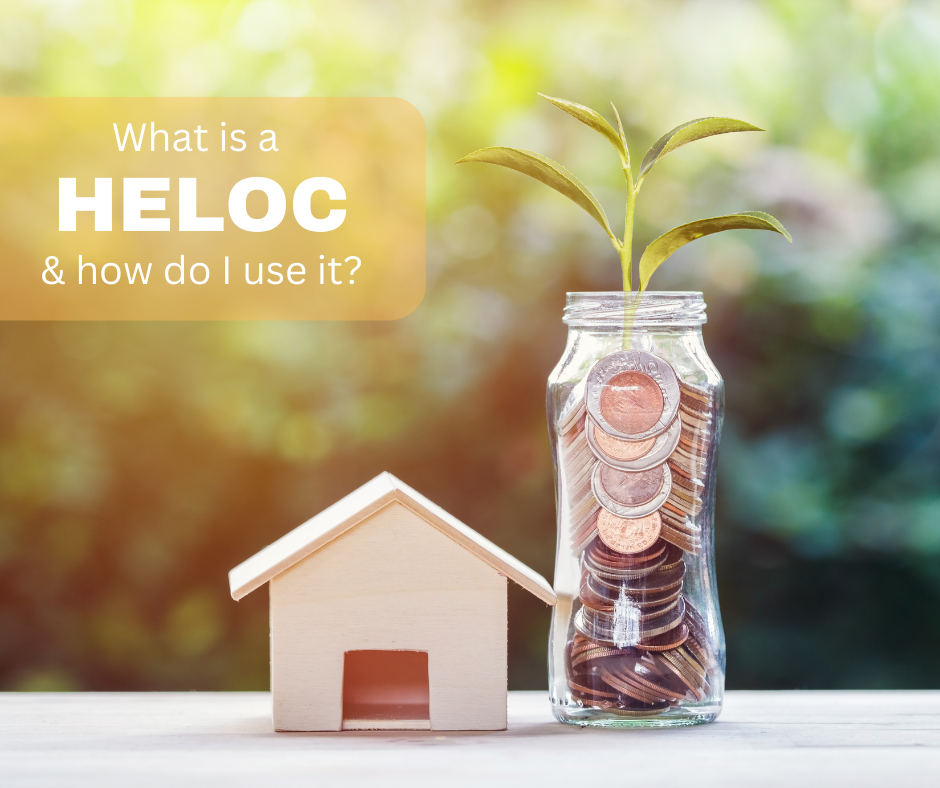What Is A HELOC And How Do I Use It?
If you own a home, you will likely accumulate equity in that property over time. As its value increases and as you pay down your mortgage loan balance, that equity will increase. But rather than letting that equity sit unused for years, you can tap into it with the help of home equity products such as a HELOC.
Here’s a look at how HELOCs work, how much you can borrow with a HELOC, and what to expect from the process when you pull from your home’s equity.
What is Home Equity?
Your home’s equity is the value of the property that you own, versus what your bank still owns. To calculate equity, simply take your home’s current market value (what it’s worth) and subtract what you still owe on the property (any liens, such as your mortgage loan balance). The remainder is your home equity.
So, if you have a home worth $380,000 today and still owe $97,000 to your mortgage lender, you have $283,000 in equity.
What is a HELOC?
A home equity line of credit, or HELOC, is a revolving line of credit that is secured by the equity in your home. This line of credit uses a portion of your equity as collateral to secure the debt, and allows you to withdraw funds as needed for a predetermined period of time.
HELOCs typically have a set draw period, usually around 10 years, during which you can pull from the line of credit if and when you need cash. This isn’t mandatory, though, and you can technically leave a HELOC open without ever borrowing against the limit.
Once your draw period ends, the HELOC enters a repayment period, often lasting another 15 to 20 years. During the repayment period, you cannot withdraw any additional funds.
If you do pull cash from your HELOC, you’ll sometimes be required to make interest-only payments for the remainder of the draw period. Once the repayment period begins, you’ll make scheduled monthly payments toward both interest and the principal balance, as with any other installment loan product. And if you don’t ever pull any money from your HELOC, you don’t need to repay anything to the line of credit.
What You Can Use HELOC Funds For
HELOCs are secured by the equity in your home, but unlike other types of secured loans (like auto loans or your original home mortgage loan), the funds don’t have to be earmarked for any specific purpose. This means that you can use a HELOC for nearly any* purpose!
This means that you can use a HELOC to do things like:
- Consolidate existing debt
- Cover a home renovation project or necessary repairs
- Make a large purchase, such as a new car or even the down payment on another home
- Take your family on vacation
- Pay your kids’ college tuition expenses
- Provide you with a financial safety net, in case you ever need quick access to cash
The funds are pulled out of your HELOC via ACH transfer, paper check, or even using a dedicated debit card. This money can then be spent like cash, however and wherever you need it.
*Your lender may add verbiage to your HELOC agreement that prohibits you from using the cash for things like illegal activities. But otherwise, spend it however you wish.
How Much Can I Borrow With a HELOC?
Since a HELOC is secured by the equity in your home, you’ll need to actually have equity before you can borrow. And the amount you’re able to borrow will be a factor of that available equity.
If your home is worth $525,000 and you only owe $110,000 on your home mortgage loan, you have $415,000 in available equity. Lenders won’t let you borrow all of that, though, and will instead set a maximum loan-to-value ratio (LTV) limit.
In this example, your current LTV is 20.9%. If your lender only allows a maximum combined LTV of 80%, you’d be limited to a HELOC of $310,000.
$525,000 home value x 80% combined LTV = $420,000 maximum total liens
$420,000 maximum – $110,000 existing mortgage balance = $310,000 in available equity
This would still leave you with 20% in home equity, which helps limit your lender’s risk.
Depending on the lender, a HELOC may be offered on a:
- Primary home
- Secondary or vacation home
- Investment property, such as a rental home
- Single-family home
- Multi-family home (like a duplex, triplex, or quadplex)
- Condominium or townhome
The amount you can borrow may further be limited by the type of property you own. For example, a lender might allow a maximum LTV of 90% on a primary home, but only 65% on an investment property. Or you might get up to 85% LTV on a single-family home but only up to 60% on a manufactured home.
How Much Does a HELOC Cost?
There are a few potential closing costs to note when it comes to opening and using a new HELOC. Be sure to read your lender’s fine print to understand which of these may apply to you and, if so, how much it will cost you in the end.
| HELOC Fees | Purpose |
| Application or origination fee | Covers the administrative costs of your new line of credit |
| Interest (APR) | The interest charged on any borrowed funds; can be variable or fixed |
| Annual fee | A recurring fee that is charged while your HELOC is open and available |
| Home appraisal fee | The cost of ordering a home appraisal report, to accurately determine your home’s current market value |
| Early termination fee | A penalty fee imposed if you pay off and cancel your HELOC too soon after opening the account (usually within the first 24 or 36 months) |
Application or origination fee
A HELOC application or origination fee helps the lender cover the cost of underwriting and issuing your new line of credit. This fee is not as common as the others mentioned here, but may run from 0.5% to 5% of the total line of credit amount. This line item could also include smaller costs such as recording fees, notary fees, and credit report fees, depending on the lender.
Interest or finance charges
You will incur interest charges on your HELOC based on the amount borrowed, as with any loan. If you don’t ever tap into your line of credit, you won’t be subject to any interest. If you do borrow money, though, you’ll pay interest on that balance until it’s repaid. HELOC interest rates may be variable or fixed, and some lenders allow you to “lock in” rates at certain intervals.
Annual fee
Many HELOCs charge an annual fee for as long as the line of credit is open and available. Usually charged during the draw period, this fee ranges from $50 to $150 a year, on average.
Home appraisal report fee
In order to accurately determine how much your home is worth — and therefore, how much equity you actually have in the property — a lender will usually want to request an updated home appraisal report. This inspection is ordered by the lender and utilizes an unbiased, licensed inspector.
Following your home inspection, the lender will have an accurate idea of your home’s current market value. From there, they can subtract any liens on the property and calculate how much equity you’re allowed to tap into with your new HELOC.
Early termination penalty fee
Some lenders may cover a portion of your HELOC’s origination fees, or the upfront costs associated with opening and issuing the line of credit. If you pay off and/or close out the HELOC soon after opening it, however, you may be required to pay some (or all) of those expenses back to the lender.
Early termination penalties vary by lender and equity product, and might be a flat dollar amount or a percentage of the total line of credit limit. You may be subject to this fee if you close your HELOC within the first 36 months or so after opening the line.
HELOC Interest Rates
Since a HELOC is secured by the equity in your home, it can often have a lower interest rate than unsecured debt products, such as personal loans or credit cards. However, these interest rates are usually variable in nature, meaning that they are subject to change over time.
As industry benchmark rates rise (or fall), so too may your HELOC’s effective rate, particularly during the draw period. This can make it difficult to predict exactly how much those funds might cost you down the line, especially if you don’t withdraw cash right away. As of this writing, a good HELOC interest rate is anything in the single digits or lower teens… but this could easily change.
Many HELOCs have a variable rate during the draw period, but a fixed interest rate once the repayment period begins. You may also have the option to “lock” your rate at different intervals during the draw period. For example, your lender may allow you to lock in a fixed rate on up to three individual withdrawals, or to lock your current balance’s rate for a year.
The details will vary from one lender to the next, so it can be wise to shop around until you find the best HELOC rates and terms for your specific needs.
How HELOC Interest Rates Are Determined
So, how do you go about getting the lowest HELOC rates available? The answer is multifaceted.
Overall rates are established by the underlying index or Prime rate. As this benchmark changes, so do the rates that banks are willing to offer. This means that, regardless of all other factors, your HELOC rates can only get so low.
Locking in a lender’s lowest offered rate on a HELOC is then a factor of your own qualifications. Generally, the lowest possible rates are available to borrowers based on:
- Excellent credit scores
- Certain income and debt-to-income ratio (DTI) requirements
- Location
- Home type
- Loan-to-value ratio (LTV)
What Credit Score Do I Need to Get a HELOC?
In general, HELOC borrowers will need to have good credit or better to get a HELOC, even though the line of credit is secured by the equity in their home. This often means having a credit score of 660 or higher.
Each lender sets its own requirements for borrowers, including the minimum credit score you’ll need to qualify. This requirement can also vary based on how much you want to borrow, your current DTI, and even the type of home you own.
HELOC Alternatives
Not sure if a HELOC is the best option for you? Here are some alternatives to consider.
- Home equity loans — Both HELOCs and home equity loans enable you to pull cash from your property’s available equity. With a home equity loan, though, you’ll get a single lump sum loan with either a fixed or variable interest rate and set repayment terms. There are no annual fees and payments may be more predictable.
- Personal loans — If you qualify, you could also consider a personal loan in lieu of a HELOC. This lump sum installment loan is unsecured, meaning that you aren’t risking your home if you default, and funding can be as quick as the same business day. However, loan limits may be lower — and interest rates higher — than with a secured HELOC.
- Cash-out refinance — A cash-out refinance replaces your existing mortgage loan with a new, larger loan and gives you the difference back in cash. This may result in a different interest rate, repayment term, and monthly mortgage payment.
FAQs about HELOCs
What happens if I default on a HELOC?
A HELOC is secured by the equity in your home. So, if you default on this line of credit (fail to make payments as agreed) the lender can initiate the foreclosure process. If this happens, you could lose your home to satisfy any outstanding liens, including your HELOC and your mortgage loan.
How long does it take to get a HELOC?
It often takes between four to six weeks to complete the HELOC process and get access to your home equity funds. This includes the application, underwriting, and appraisal.
How much can I borrow with a HELOC?
Lenders may allow you to borrow as much as $2 million against your home with a HELOC, but only if you have enough equity on that property in the first place. Lenders often have an LTV limit of 80% to 85% on a primary home, or lower on secondary and investment properties.
Can I get a 100% LTV HELOC?
Select credit unions will allow you to take out between 90% and 100% LTV with a HELOC, but these are very limited and are only available to members. Generally, the LTV limit on a HELOC ranges from 75% to 85%.
How much are HELOC payments each month?
During the draw period, HELOCs often require interest-only payments according to how much you’ve withdrawn and your current interest rate. Once your HELOC enters the repayment phase, you’ll need to make monthly installment payments on both the principal and interest, through the remainder of the HELOC term.












